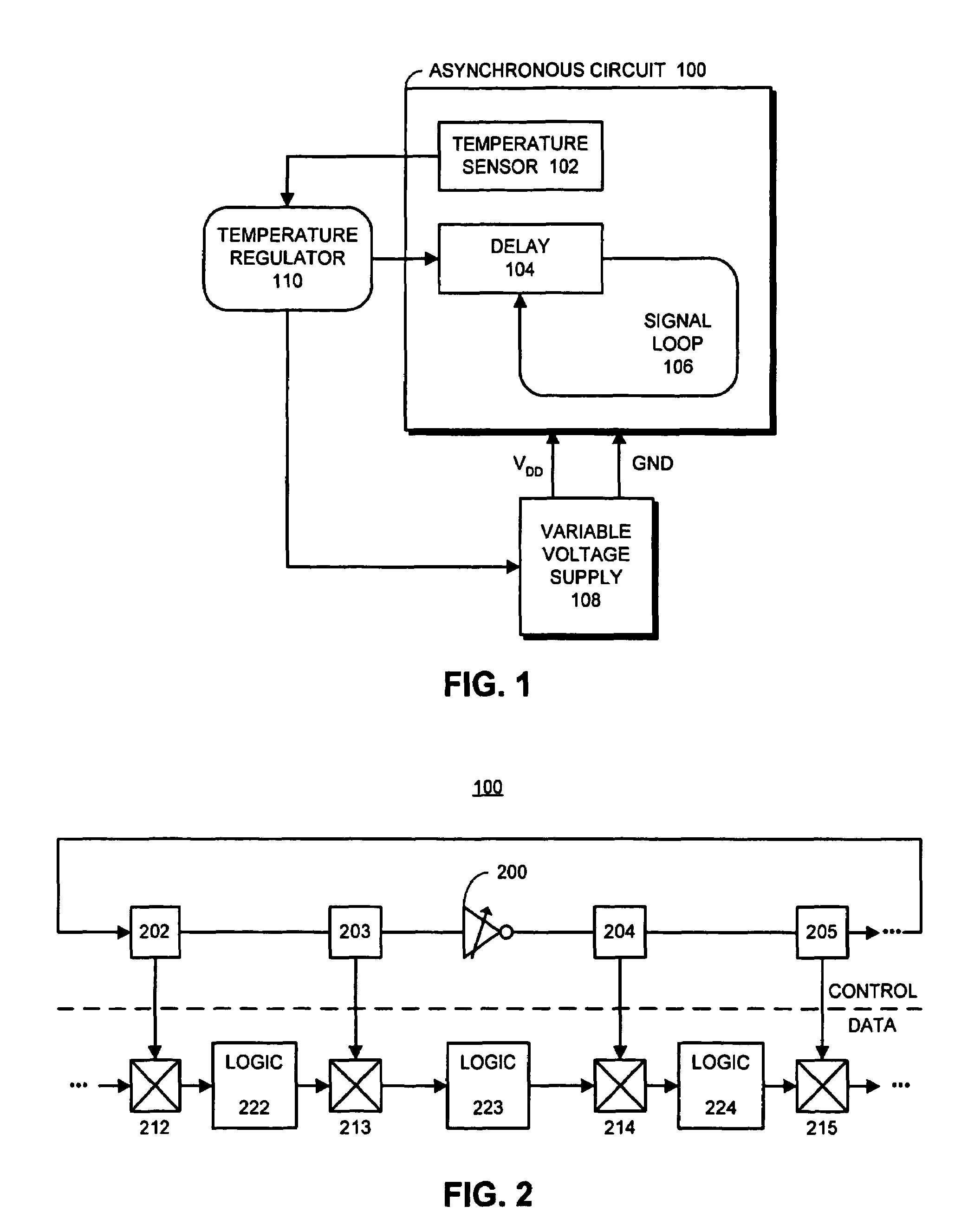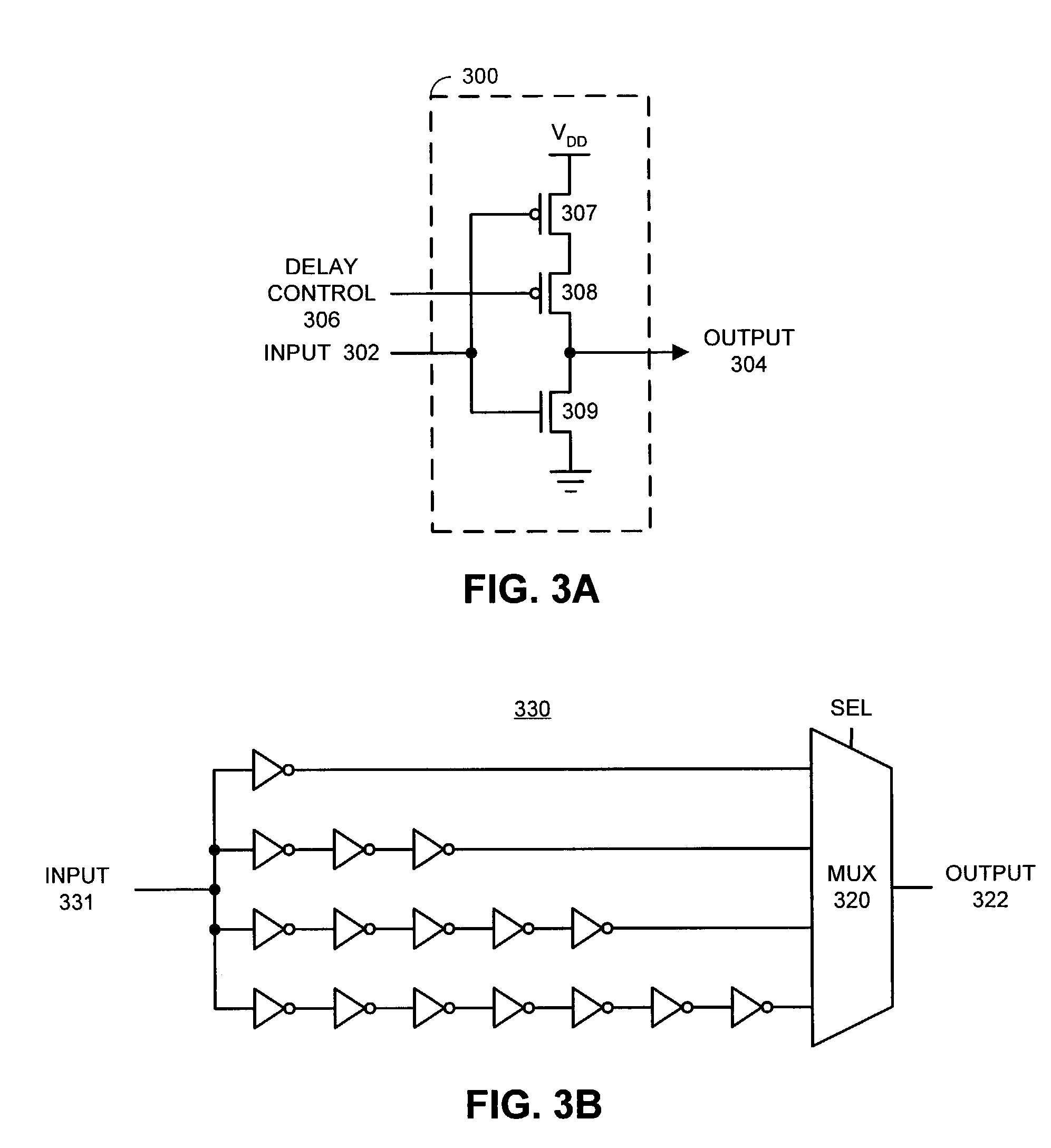Method and apparatus for regulating heat in an asynchronous system
a technology of asynchronous circuits and heat buildup, applied in the field of systems, can solve the problems of circuits switching more frequently, affecting the performance of computational circuits, and becoming progressively harder to synchronize computational operations with reference to a single global clock signal, so as to achieve less hea
- Summary
- Abstract
- Description
- Claims
- Application Information
AI Technical Summary
Benefits of technology
Problems solved by technology
Method used
Image
Examples
Embodiment Construction
[0021]The following description is presented to enable any person skilled in the art to make and use the invention, and is provided in the context of a particular application and its requirements. Various modifications to the disclosed embodiments will be readily apparent to those skilled in the art, and the general principles defined herein may be applied to other embodiments and applications without departing from the spirit and scope of the present invention. Thus, the present invention is not intended to be limited to the embodiments shown, but is to be accorded the widest scope consistent with the principles and features disclosed herein.
Temperature Regulation System
[0022]FIG. 1 illustrates a temperature regulation system for an asynchronous circuit 100 in accordance with an embodiment of the present invention. The asynchronous circuit illustrated in FIG. 1 can generally include any type of circuit that does not synchronize computational operations and data movement operations ...
PUM
 Login to View More
Login to View More Abstract
Description
Claims
Application Information
 Login to View More
Login to View More - R&D
- Intellectual Property
- Life Sciences
- Materials
- Tech Scout
- Unparalleled Data Quality
- Higher Quality Content
- 60% Fewer Hallucinations
Browse by: Latest US Patents, China's latest patents, Technical Efficacy Thesaurus, Application Domain, Technology Topic, Popular Technical Reports.
© 2025 PatSnap. All rights reserved.Legal|Privacy policy|Modern Slavery Act Transparency Statement|Sitemap|About US| Contact US: help@patsnap.com



